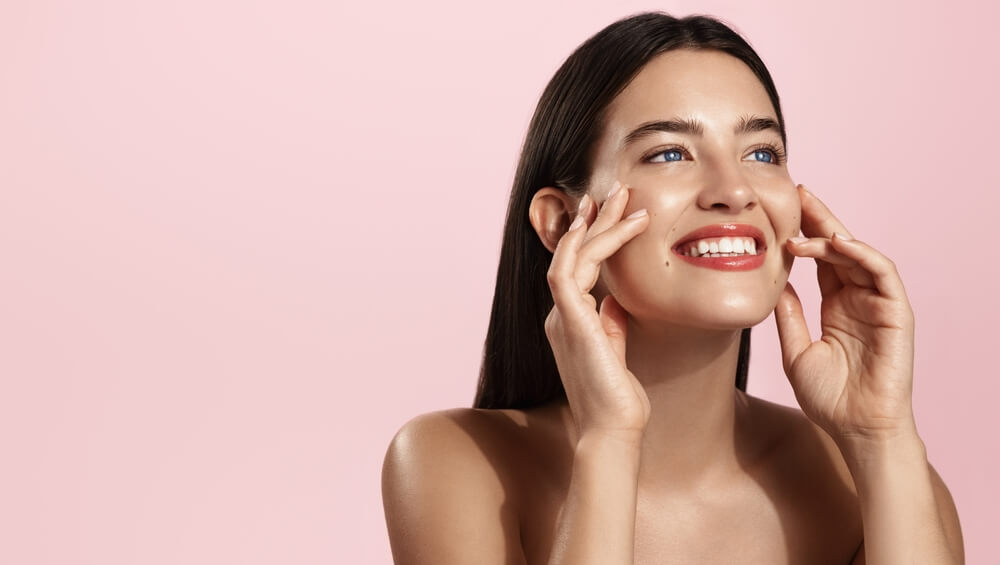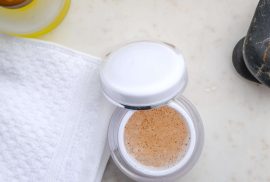Slugging 101: Is This K-Beauty Trend Right for Your Skin Type?

Struggling with a damaged skin barrier? You’re not alone. This has been a rapidly rising problem for people all over the world, leading to dehydration, sensitivities, breakouts, and more. This is likely why the slugging trend became so popular so quickly – it claims to be a godsend for anyone whose skin barrier needs some TLC.
With that said, while many may be raving about this intriguing new trend, not everyone has had success with it. Yes, slugging offers some undeniable benefits, but certain skin types may need to practice this trend in a different way if they only want to see its perks rather than its downsides. Keep reading as Vivo Per Lei further explores the slugging trend to help you decide whether or not it’s right for your skin.
What Exactly is Slugging?
Slugging is a technique that’s usually carried out in the evening. It involves following your nighttime skincare routine as normal, but then adding in a thick occlusive ointment, such as petroleum jelly, as the final step. A thin layer of the occlusive is spread over the face, which gives the face a very shiny, slimy appearance, similar to the trail of mucus left behind by a strolling slug!
The Benefits of Slugging
Although the name may not sound very appealing, slugging offers up some distinct benefits:
Boosts Skin Hydration Levels
Water is one of the most crucial elements required by your skin. However, with so much out there that dehydrates the skin, it can be difficult to keep the skin’s moisture reservoirs topped up. This is particularly the case overnight, which is when moisture loss is at its peak. While you sleep, your skin loses a large amount of its moisture to evaporation.
Slugging helps to prevent this. The thick occlusive layer that sits atop the skin’s surface slows moisture loss right down. With moisture not being able to evaporate away at the same rate, your skin cells will have access to it for longer. This will go a long way in keeping your skin better hydrated. Wake up the morning after slugging and your skin should look much softer, brighter, and bouncier than usual.
Keeps the Skin Barrier Feeling Protected
As we mentioned earlier, skin barrier damage is becoming increasingly common. While there are plenty of products out there that promise to repair this damage, sometimes what your skin barrier needs the most is a break so that it has some time to recuperate.
Again, slugging provides exactly that. The occlusive layer that you apply essentially mimics the functions of your skin’s natural protective barrier. From retaining moisture to keeping impurities out, your skin barrier will be able to pass these tasks over to that occlusive layer so that it can focus on doing what’s needed to keep itself feeling strong and resilient.
Encourages the Absorption of Other Skincare Products
It’s not just natural moisture that evaporates out of the skin each night. A large portion of the skincare products that you apply before bed evaporates away as well.
Yes, sealing your skincare products in with a moisturizer helps, but slugging takes this one step further. With petroleum jelly, or whichever occlusive you choose, being much thicker than a regular moisturizer, it does an even better job of locking in the other skincare products that you’ve applied.
The Downside of Slugging
As you can see, slugging could be the answer to some of the skin problems you’re dealing with. However, like with most skincare trends, there’s always a downside…
In this case, that falls on those who have an oily skin type. With oily skin already producing so much excess sebum, sitting a thick occlusive on your skin for several hours could lead to clogged pores. While petroleum jelly is too large in terms of molecular size to actually penetrate your pores, the way in which it will trap in the oil that your skin is releasing is what causes the blockages. This then increases your chances of developing breakouts.
Fortunately, there’s a way to get around this. Rather than slugging overnight, consider slugging for just a couple of hours instead. Sometimes referred to as short-contact slugging, this technique still helps to boost skin hydration and give the skin barrier a break, but without leaving sebum trapped in your skin all night.
The other downside to slugging? That greasy occlusive layer on your skin can sometimes transfer over onto your pillowcase, causing staining. Again, there’s an easy fix to this. Simply use an old (but clean!) pillowcase whenever you plan on slugging at night! You could also place a towel over your pillow on the nights you slug.
A Slugging Skincare Routine to Try
Want to give slugging a try? Here’s a good slugging routine to follow:
Cleanse Your Skin

The first step in any skincare routine is to cleanse, but this becomes even more important if you’re planning on slugging. The last thing that you want to do is trap any dirt, sebum, dead skin, or allergens into your skin all night, making it crucial that these are all thoroughly removed.
With that said, choose your cleanser wisely. Make sure that the formula you pick is suitable for your skin type. If you have dry or sensitive skin, pick a gentle, hydrating cleanser, just like the Vivo Per Lei Hyaluronic Acid Daily Facial Wash. If you have oily or combination skin, you’ll need something a little more powerful before slugging, just to ensure that no trace of sebum is left behind to be trapped under that occlusive layer. A cleanser like the Vivo Per Lei Collagen Foaming Cleanser would be ideal.
Apply a Hydrating Serum

Once you’re done cleansing, it’s time to hydrate your skin. This is a key part of slugging. If you apply the occlusive layer without first hydrating your skin, it isn’t going to do much. You need to ensure that the occlusive slugging layer has plenty of moisture to seal into your skin, and hydrating serums are great for providing this.
This is where the Vivo Per Lei Aloe Soothing Facial Serum really shines. It hydrates with a blend of sodium hyaluronate, aloe vera, allantoin, and silk amino acids. All are very lightweight ingredients, making this serum perfect for use pre-slugging. Those same ingredients are also known for the soothing effect that they have on the complexion, enabling them to calm the feeling of inflammation and irritation.
The Radiance Gold Facial Serum would be another great choice. Again, it features sodium hyaluronate – one of skincare’s most loved hydrating ingredients! In this formula, it’s joined by polyglutamic acid, an ingredient that’s considered to be even more hydrating than sodium hyaluronate. Meanwhile, beta glucan, glycerin, amino acids, and more pull in an additional pop of moisture.
Moisturize Your Skin

If you’re giving short-contact slugging a try on oily skin, you may want to skip this step. It will lighten things up and help to prevent your slugging efforts from clogging up your pores.
For all other skin types, however, moisturizing before slugging can be very helpful. Not only do moisturizers help to add some extra hydration, but they also seal off the skin in the same way that your slugging layer will. Having this double seal will really help to bump up your skin’s moisture levels.
At the same time, you don’t need to use a moisturizer that’s too thick. After all, slugging already leaves the skin feeling a little greasy – you don’t want it to be overly so! Pick a lightweight formula, such as the Vivo Per Lei Marine Aqua Facial Cream.
Apply Your Slugging Layer
Now for the part you’ve been waiting for – applying your slugging layer! Petroleum jelly has a very thick and gloopy texture, so be careful not to use too much. A light layer is all that’s needed. Start with just a pea-sized amount and spread this over your face before deciding whether or not you need more.
If certain parts of your face are drier than others, you may want to give those areas a second coating. Again, keep this light. Likewise, if you have combination skin, you could try slugging just the dry parts of your face, leaving the oilier areas as they are.
Once you’re done, wait for at least 30 minutes before hitting the sack. This gives your skincare products enough time to settle into your skin, saving your pillow from being smeared with quite so much! You may also want to don a hair wrap or tie your hair into a loose braid to prevent stray strands from sticking to your face overnight and ending up with a coating of petroleum jelly themselves!
Extra Slugging Tips to Keep in Mind

Before you dive into a slugging experience of your own, here are a few extra tips to keep in mind:
- Avoid applying powerful active ingredients before slugging. Strong actives, such as the retinol found in the Vivo Per Lei 24K Gold Caviar Serum, may irritate your skin if trapped under a thick occlusive layer. Save those actives for nights when you aren’t slugging.
- Avoid slugging your skin if you’re sunburnt. Slugging can sometimes intensify that painful, burning sensation!
- Make sure that you thoroughly wash your face in the morning to remove all traces of the occlusive layer. If you don’t, your daytime skincare products won’t be able to penetrate your skin.
- Don’t slug too often. Once or twice a week is enough to start with.
Summary
There’s no arguing with the fact that, when done correctly, slugging can be extremely beneficial for certain skin types. Dry and sensitive skin, both of which indicate a compromised skin barrier, can really perk up after being slugged. If you have oily or combination skin, you don’t necessarily need to miss out on this trend. Follow our advice when it comes to short-contact slugging and keeping your other skincare products light, and you’ll also be able to turn to this technique to boost your skin’s hydration levels.
Click here to elevate your skincare routine with more bestselling products from Vivo Per Lei.





